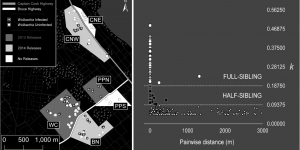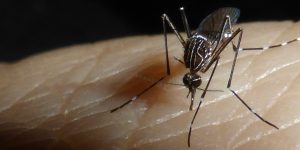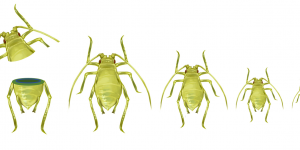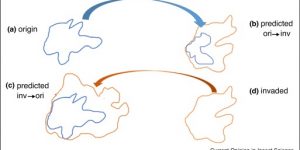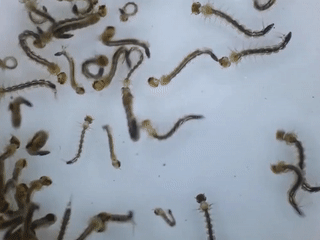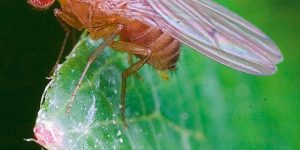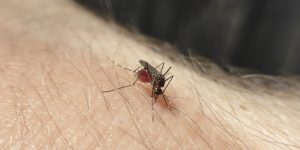Category: Research
-
Large male mosquitoes unluckier in love
Words and images: Perran Ross Large male mosquitoes may have more trouble than smaller males in finding a partner. In a new study, we find that small female mosquitoes tend to avoid larger males, preferring to mate with smaller ones. In this study, now available as a pre-print on bioRxiv, we performed laboratory experiments to […]blogs.unimelb.edu.au/pearg/2018/05/31/large-male-mosquitoes-unluckier-in-love
-
New publication | Fine-scale landscape genomics helps explain the slow spatial spread of Wolbachia through the Aedes aegypti population in Cairns, Australia
Author summary and figures by Tom Schmidt Wolbachia is a bacterium that suppresses the capacity for arbovirus transmission in the mosquito Aedes aegypti, and can spread spatially through wild mosquito populations following local introductions. Recent introductions in Cairns, Australia have successfully established Wolbachia in the Ae. aegypti population, but the infection has spread more slowly than expected […] -
NEW PROJECT | Buruli ulcer
Words and photo: Jason Axford On 26 April at the Peter Doherty Institute, Federal Minister for Health, Greg Hunt, announced new NHMRC funding to investigate the mysterious and rather horrific disease commonly known as Buruli ulcer (BU) (formerly known as Bairnsdale ulcer). The project is led by Prof. Tim Stinear in the Department of Microbiology […]blogs.unimelb.edu.au/pearg/2018/05/10/new-project-buruli-ulcer
-
Biology of the babushkas
Words: Samantha Ward As the name suggests, at the Pest & Environmental Adaptation Research Group we are interested in pest species and enjoy investigating novel approaches to sustainably control such organisms. I began my PhD at PEARG in 2016 studying parasitoid wasps; A group of wasps that lay their eggs inside or onto other arthropods. […]blogs.unimelb.edu.au/pearg/2018/05/10/biology-of-the-babushkas
-
Ambiguous literature | kdr triple resistance mutation – Where has it really been found?
Editors note: This article is direct from our internal research diary Words: Nancy M. Endersby-Harshman The purpose of this article is to recommend very careful reading and analysis of the literature relating to sodium channel mutations in Aedes aegypti and equal care in writing about them. I have uncovered some confusion in the mosquito literature […] -
Rapid evolution in insect pest species
Off the back of a review Ary wrote last year in Current Opinion in Insect Science, a less technical and more digestible summary is now available (sans pay-wall) at Science Trends. A Quote from the Science Trends article to grab your interest: Evolutionary changes often occur when pest species invade new areas where they have […]blogs.unimelb.edu.au/pearg/2018/04/30/rapid-evolution-in-insect-pest-species
-
Collecting fresh mosquitoes | PEARG in the field
Words: Tom Schmidt Photos: Tom Schmidt and Perran Ross At PEARG, we have a great interest in environmental pests and how to deal with them. One of these pests is the mosquito Aedes aegypti, which causes catastrophic damage throughout the world’s tropical zone. Aedes aegypti spreads viruses such as dengue, Zika and chikungunya, and is […]blogs.unimelb.edu.au/pearg/2018/04/30/collecting-fresh-mosquitoes-pearg-in-the-field
-
The Wolbachia pandemic | Symbionts spread rapidly across highly diverged flies
Words: Perran Ross Cover photo: Andrew Weeks Wolbachia are perhaps the most prevalent bacterial symbionts on earth. Of the millions of insect species, Wolbachia are estimated to infect up to half of them. These bacteria are renowned for the effects they exert on their hosts, which can often be quite dramatic. Some Wolbachia strains are […] -
WOLBACHIA BACTERIA IN ACTION | How we’re using naturally occurring bacteria to stop mosquitoes from spreading disease
Words and images: Perran Ross Cover photo: Jason Axford Dengue is a major global health issue. It infects millions of people every year and can cause debilitating illness, inflicting joint pain, rash and fever. Without any effective vaccine, the best way to prevent dengue is to target the mosquitoes that transmit it. Dengue is spread […] -
New review | The detection and significance of emerging insecticide resistance in mosquitoes
Nancy, Andrew and Ary have a fresh review article in CSIRO’s ‘Microbiology Australia’ journal. Below is the abstract, for the full text please follow this link. Mosquito-borne arboviruses are increasing in incidence around the world. Australia enjoys some protection from pests and diseases afforded by its geographic isolation coupled with strict biosecurity control at its […]
Number of posts found: 65

